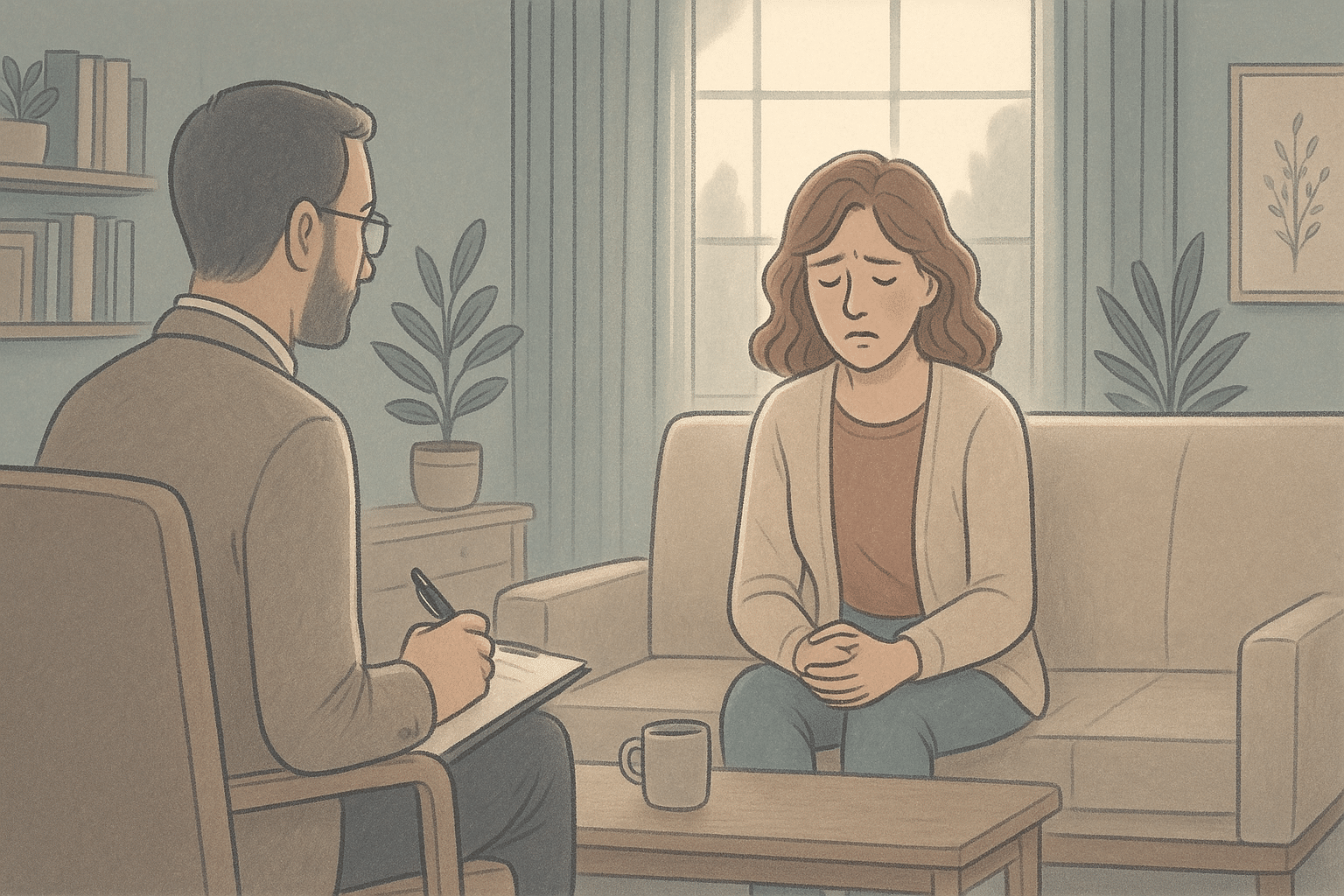Key Takeaways
- Childhood trauma creates profound neurobiological changes that impact emotional processing and psychological development.
- Healing from trauma requires comprehensive strategies involving self-reflection, emotional processing, and personal growth.
- Physical practices like yoga, mindfulness, and exercise can significantly support psychological recovery and neurological recalibration.
- Building resilient support systems and developing emotional intelligence are crucial components of trauma healing.
- A Mission for Michael (AMFM) offers specialized, compassionate, and comprehensive treatment for childhood trauma recovery.
Understanding Childhood Trauma
Trauma encompasses a comprehensive range of experiences that overwhelm an individual’s capacity to cope. These experiences extend beyond traditional definitions of physical abuse, including emotional neglect, prolonged psychological distress, witnessing violence, experiencing significant loss, and enduring chronic familial dysfunction.
The complexity of trauma lies in its subjective nature. What constitutes a traumatic experience varies based on individual resilience, developmental stage, and personal context.
Childhood trauma represents a complex psychological experience that fundamentally alters brain development and emotional processing. Neurological research reveals profound changes in brain structure, particularly in regions responsible for stress response, emotional regulation, and memory processing.
Early traumatic experiences essentially rewire the developing brain’s response systems. Children who experience chronic stress or trauma develop heightened threat detection mechanisms, often resulting in persistent hypervigilance, emotional dysregulation, and challenges in forming trusting relationships.
| A Mission For Michael: Expert Mental Health Care Founded in 2010, A Mission For Michael (AMFM) offers specialized mental health care across Southern California, Minnesota, and Virginia. Our accredited facilities provide residential and outpatient programs, utilizing evidence-based therapies such as CBT, DBT, and EMDR. Our dedicated team of licensed professionals ensures every client receives the best care possible, supported by accreditations from The Joint Commission and the California Department of Health Care Services. We are committed to safety and personalized treatment plans. Start your recovery journey with AMFM today! |
Recognizing Trauma’s Psychological Terrain
Psychological Manifestations
The human nervous system responds to traumatic experiences through multilayered protective responses. Psychological manifestations can include heightened startle responses, persistent emotional numbness, difficulty maintaining intimate relationships, chronic anxiety, and profound challenges in emotional self-regulation.
Individuals might experience persistent feelings of shame, challenges in emotional expression, and difficulty establishing healthy interpersonal boundaries. These responses are not signs of weakness but sophisticated survival strategies developed during vulnerable developmental periods.
Long-Term Psychological Consequences
Individuals may develop complex post-traumatic stress disorder, experience increased vulnerability to depression and anxiety, and encounter significant challenges in professional and personal relationship formations. These consequences represent ongoing adaptations to early traumatic experiences.
Psychological consequences extend beyond immediate emotional responses. Trauma can fundamentally alter an individual’s worldview, creating persistent patterns of perception, emotional regulation, and interpersonal interaction. These alterations become deeply integrated into personal identity, requiring comprehensive, compassionate approaches to healing and transformation.
Self-Assessment and Awareness

Journaling and self-reflection can help uncover patterns and emotions linked to childhood trauma.
Developing Emotional Intelligence
Self-awareness is a fundamental pathway to healing, demanding extraordinary courage and compassionate self-exploration. This journey requires creating a safe internal environment where individuals can honestly examine their psychological terrain without judgment. Emotional intelligence develops through sustained, intentional practice of self-observation, understanding personal trigger mechanisms, and cultivating a nuanced understanding of one’s emotional responses.
Techniques for Self-Reflection
Comprehensive journaling practices serve as powerful tools for psychological excavation. Individuals learn to track emotional patterns, identify recurring psychological themes, and develop a deeper understanding of their internal experiences.
Creating a Personal Healing Framework
Developing a personalized healing approach requires intricate self-understanding. This process involves meticulously identifying specific trauma triggers, comprehending complex emotional response patterns, and establishing clear personal boundaries.
Emotional Processing Strategies
Writing Techniques
Therapeutic letter writing allows individuals to express unspoken emotions, providing cathartic release and psychological integration.
Creative Expression
Art therapy techniques, musical expression, movement-based emotional exploration, and symbolic representation provide powerful mechanisms for expressing complex, often inexpressible traumatic experiences.
Mindfulness
Trauma-informed meditation techniques, somatic experiencing approaches, and body-centered awareness practices help individuals develop refined emotional regulation skills.
Self-Compassion Cultivation
Inner child healing practices, self-forgiveness techniques, and compassionate self-dialogue development provide profound pathways for psychological reconstruction. These approaches recognize that healing fundamentally requires a transformative relationship with oneself.
Physiological Healing Approaches
Trauma-informed yoga practices, nervous system regulation exercises, and somatic movement therapies create opportunities for bodily recalibration. These approaches recognize the deep interconnection between physical experiences and psychological healing, offering holistic pathways for trauma recovery.
The body becomes an active participant in the trauma recovery process, not merely a passive recipient of therapeutic interventions.
Building Resilient Support Systems
Relationship Healing Strategies
Trust reconstruction techniques, boundary establishment practices, and healthy attachment skill development become critical components of healing. Individuals learn to recreate relational experiences that promote safety, authenticity, and emotional vulnerability.
Community and Collective Healing
Identifying safe support networks, joining trauma-informed support groups, and developing interpersonal resilience create expansive healing environments. Collective healing experiences provide validation, understanding, and shared transformation.

Meditation and mindfulness can help reframe past experiences and bring emotional balance.
Professional Support
Trauma severity assessment, recognizing complex trauma indicators, and understanding professional support pathways become critical components of comprehensive recovery strategies. These assessments recognize that individual healing capacities vary, and professional support represents a valuable resource.
Why Choose A Mission for Michael to Treat Childhood Trauma?

Specialized care and support can provide a structured path toward overcoming childhood trauma.
At A Mission for Michael (AMFM), we understand that childhood trauma represents a profound and complex psychological experience that demands comprehensive, compassionate, and specialized care.
Our treatment centers provide a multidisciplinary approach to childhood trauma recovery. Located strategically across California, Minnesota, and Virginia, we offer accessible, specialized care that addresses the intricate psychological and neurological impacts of childhood trauma. Our team of professionals brings together expertise from various disciplines, ensuring a comprehensive and personalized treatment strategy.

Building trust through open conversations is key to processing childhood trauma in a healthy way.
At AMFM, we believe in the extraordinary potential for healing and transformation. Our approach goes beyond managing trauma symptoms, focusing instead on empowering individuals to reconstruct their psychological framework, develop resilience, and create meaningful, fulfilling lives.
Frequently Asked Questions
Can I heal from childhood trauma without therapy?
While professional support is recommended, self-healing strategies like mindfulness, journaling, creative expression, and physical practices can support recovery.
How does childhood trauma impact adult life?
Childhood trauma can affect emotional regulation, relationship formation, stress responses, and overall psychological well-being.
What are effective self-healing techniques?
Effective techniques include mindfulness meditation, journaling, creative expression, physical exercise, and building supportive relationships.
How long does trauma recovery take?
Trauma recovery is a non-linear, individual process that varies based on personal experiences, resilience, and healing approaches.
Why choose A Mission for Michael for trauma treatment?
A Mission for Michael (AMFM) features a comprehensive, compassionate approach with multidisciplinary professionals, personalized treatment strategies, and holistic healing frameworks designed for individual trauma experiences.








